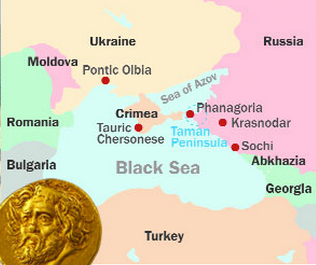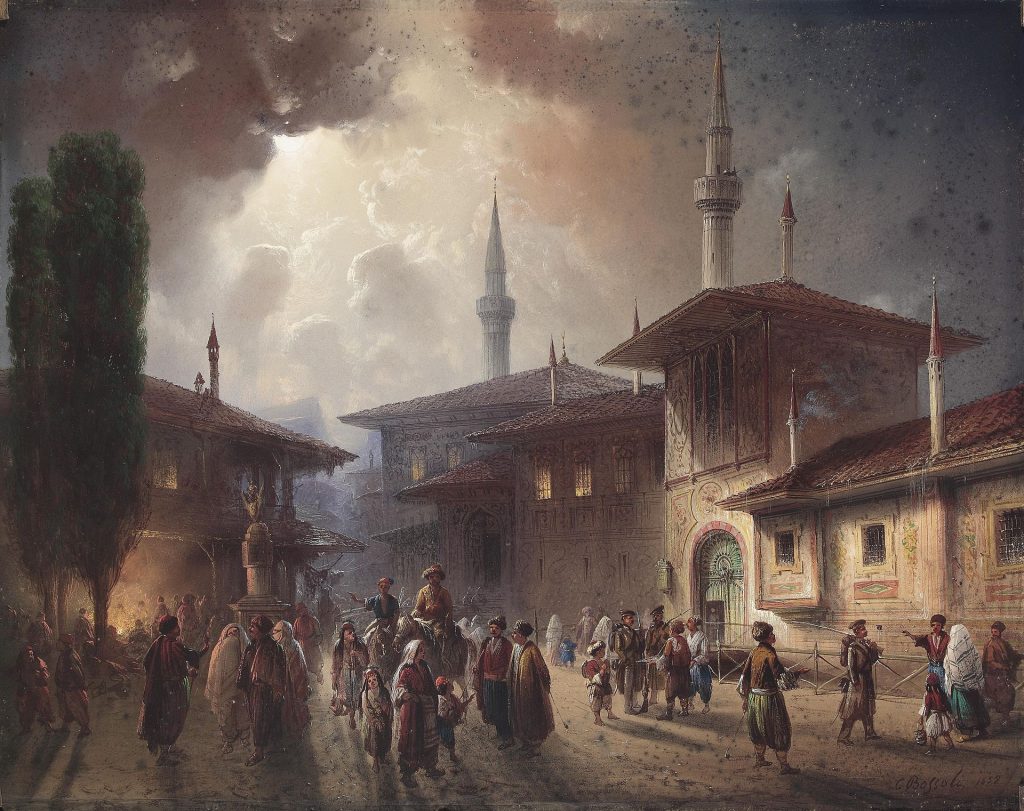“Grabrich” recently reminded me of an excellent study on the background to the Ukraine crisis today. I quote one section from early in the book setting out an overview of the historical background to Russia’s involvement in Crimea. I have added hyperlinks and broken up the paragraph for easier reading.

The Crimean peninsula is the heartland of Russian nationhood. It was here in Khersones that Prince Vladimir adopted Orthodoxy as the official religion of the people of Rus.
Following the Mongol invasion, the Crimean Khanate ruled the peninsula from 1441, whose territories at one point encompassed a large part of the northern Black Sea littoral.
From 1736 Russia started its push to take over the region, prompted in particular by the desire to put an end to the raids on the Slavic parts to the north.
Catherine the Great’s push against the Ottoman Empire saw Crimea occupied by Russian forces in 1783, and on 2 February 1784 it formally entered the Russian Empire as Taurida Oblast.
In turn, the Tatar population now faced successive waves of deportation, including in response to the threat from Napoleon in 1812, when they were sent to Siberia, and then in 1855, towards the end of the Crimean War, when they were branded as enemy agents and tens of thousands were sent to Turkey.
From the 1860s the imperial authorities launched a new wave of deportations, accompanied by attempts to Russify the northern Black Sea region.
The worst deportation was Stalin’s, on 18–20 May 1944. The whole population, some 230,000, including 40,000 who had served with distinction in the Red Army, were sent to Siberia and Central Asia, with at least 100,000 expiring en route of hunger and thirst. They had been accused of collaboration with the Nazi occupiers, but given the purges of the 1930s, which had wiped out much of the Crimean Tatar elite, surprisingly few (some 2,000) joined ‘defence teams’ rather than be sent to work in Germany.
Tatars now make up 13 per cent of the Crimean population, whereas before the Russian occupation of 1783 they comprised 80 per cent.
In 1954 the region was transferred from Russian to Ukrainian jurisdiction, a decision that was contested from the first, above all because Russians made up the majority of the population.
The 2001 census revealed that 1.45 million (57 per cent) out of a total population of 2 million claimed to be Russians, 576,000 Ukrainians and 245,000 Tatars, while some 77 per cent were registered as native Russian-speakers.
It was the return of Crimea to Russia in March 2014 that transformed the Ukrainian crisis into a major European confrontation (see Chapter 5).
Sakwa, Richard. 2015. Frontline Ukraine Crisis in the Borderlands. London ; New York: I.B. Tauris, 2015. pp. 12f

